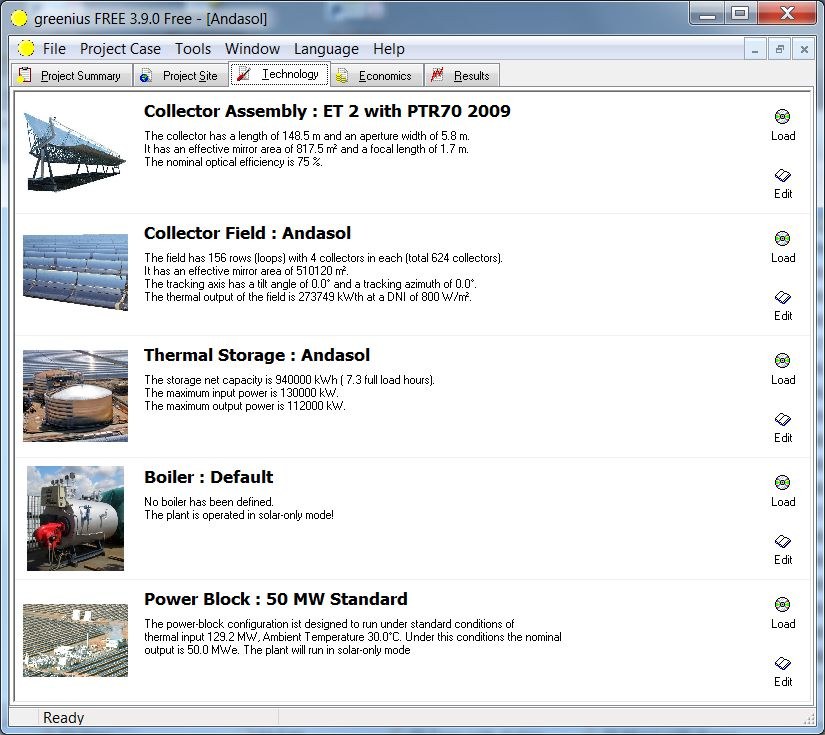Softwaretool greenius

In contrast to fossil energy sources, the yield of solar power plants and wind farms depends directly on the current irradiation or wind speed and direction. Thus, the plants only operate at nominal capacity for a few hours a year, and for the rest of the time they operate with different parameters. Therefore, the variation of environmental conditions must be taken into account when forecasting electricity production. The usual practice is to perform hourly simulations using specially prepared weather data.
Researchers at the Institute for Solar Research developed the greenius software tool for the purpose of simulating and forecasting the yield of concentrating solar power plants over time. It enables quick and easy forecasting of electricity yields and is used primarily in early project phases and feasibility studies. Although the software is focused on solar thermal power plants, models have been available for the detailed simulation of other renewable technologies. These include concentrating and non-concentrating solar collectors for process heat supply, photovoltaic systems and wind farms.

greenius is made available free of charge thanks to funding from the Federal Ministry for Economic Affairs and Energy as part of the ‘FreeGreenius’ project. The software is easy to access thanks to the simple structure of the graphical user interface and the standard components provided with typical characteristic values. In addition to the technical simulation of the power plants, the software also includes an economic part. Typical key figures such as the net present value or the amortisation period of a project are determined automatically. The software is constantly being further developed and new technologies are being added.
Further links:
► Download
► Support
Acknowledgement
The provision of greenius on this website was made possible in particular by the Federal Ministry for Economic Affairs and Energy as part of the FreeGreenius project (reference 0325427).
Further funding was provided by the European Union (TREN/FP7EN/218952, SES6-CT-2003-502626 and XVII/4.1030/Z/98-268) and the German Federal Ministry for the Environment, Nature Conservation and Nuclear Safety (reference 0329609A).
